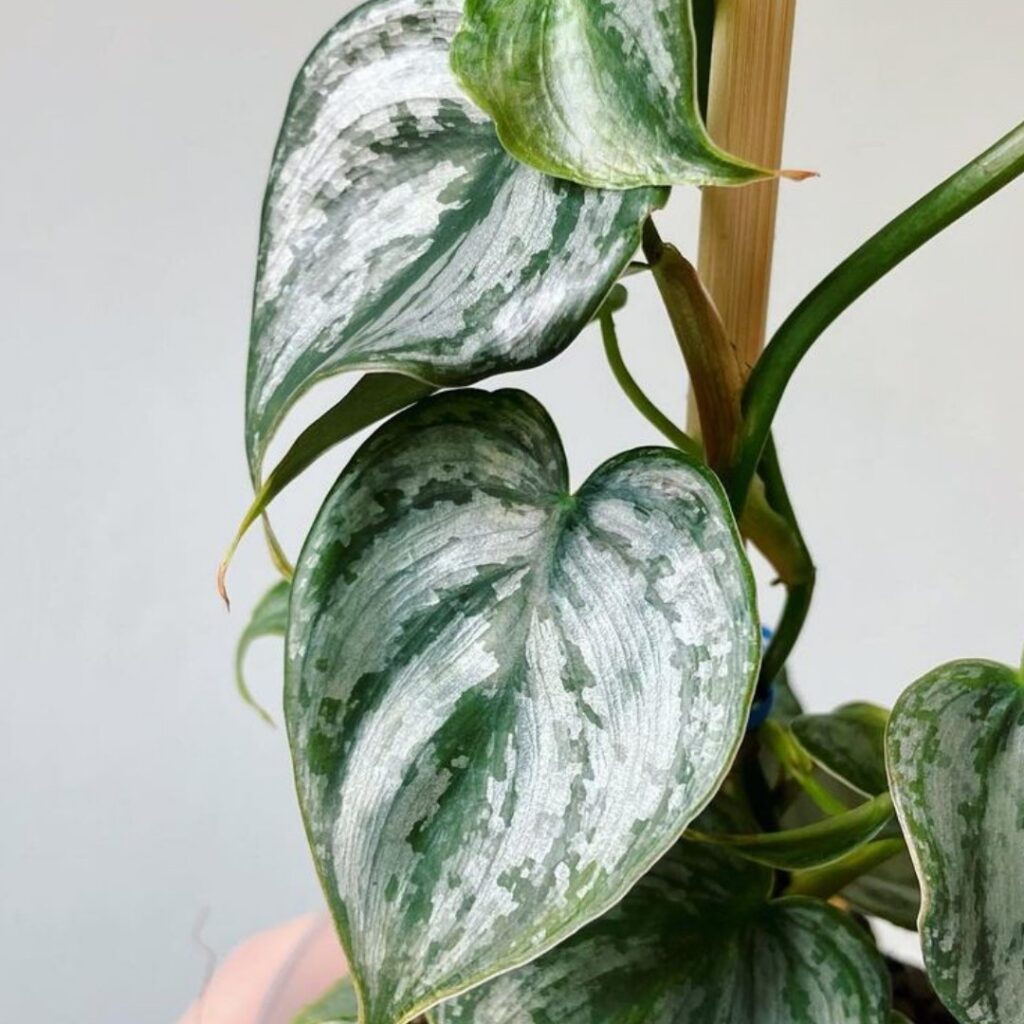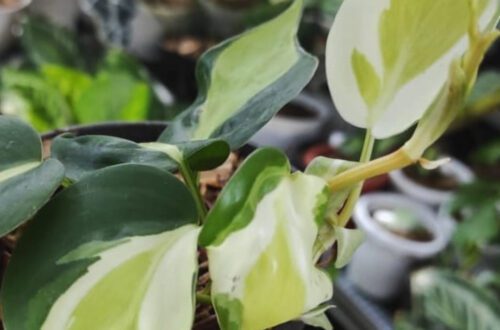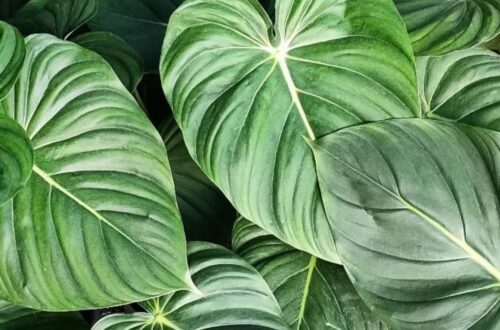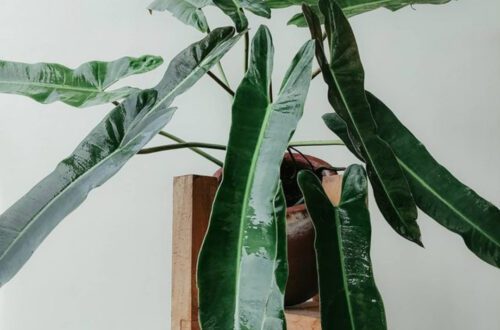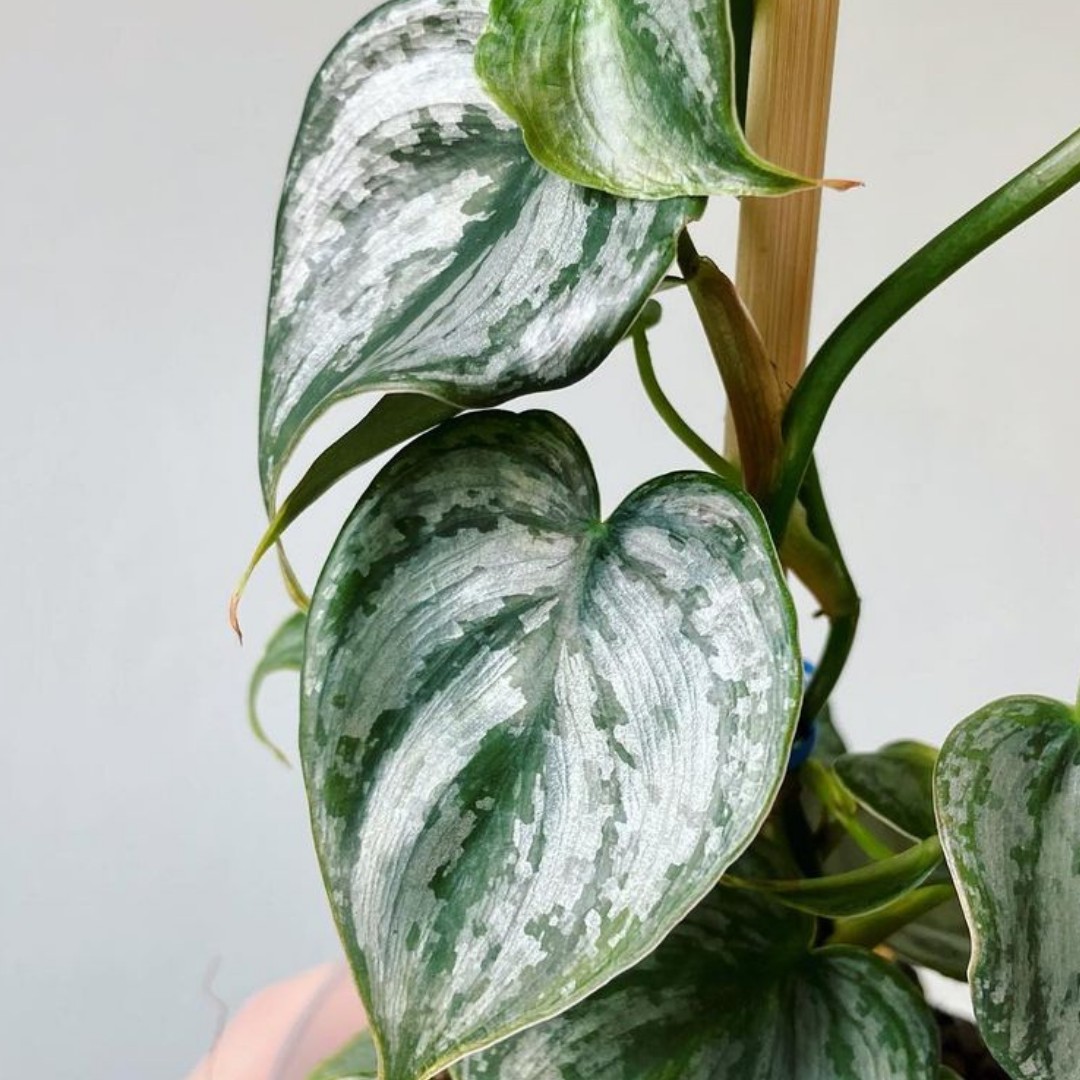
Philodendron Brandtianum Care
The key to philodendron brandtianum care is to not over water it, we run down all you need to know about care and propagation…
Philodendron Brandtianum Care Summary
| Light needs: | Indirect sunlight. |
| Watering needs: | Check weekly, water if top half of soil is dry. |
| Fertilizer: | A general purpose feed once a month in spring and summer. |
| Soil: | A well draining and potting mix with a fifth perlite. |
| Humidity: | 50%. |
| Temperature: | 15-32°C (59-90°F). |
| Where to buy: | Try our list of Rare Plant Shops or Etsy. |
| Common issues: | Root rot, leaf browning, overwatering. |
Introduction
The philodendron brandtianum aka silver leaf is a beautiful climbing philodendron known for it’s small heart-shaped silver leaves. It grows naturally in Brazil and Columbia.
See also: Philodendron Mamei Care, Philodendron Atabapoense Care, Philodendron Billietiae, Philodendron Camposportoanum Care, Philodendron Giganteum, Philodendron Gigas Care.
Tip: we recommend Etsy for buying plants. Look for the best rated seller you can, and try to buy as close to your home as possible so the plant does not travel too far.
A note about affiliate links: when you buy a plant, pots, soil, or other goods through links on this article we sometimes earn a commission. It doesn’t cost you anything, but it really helps us out if you do use them. Thanks a lot! An example of this is if you buy a plant on Etsy using this link. Read our privacy policy for more information. Thanks again.
Philodendron Brandtianum Light Needs
As always, indirect sunlight is ideal: as bright as possible without direct sun. So a good spot is a south facing window, but at the side, away from direct sunlight.
How Often to Water
Check the plant once a week in winter and twice a week the rest of the year, but only water it if the top half of soil is dry. When you water a philodendron do not drench it, but slowly pour water on the surface until you get a few drips from the bottom. If any water does collect in the tray or saucer underneath the plant, tip it out so the soil does not get water logged.
Tip: underwater this plant rather than overwater it, they must not sit in soggy soil as they get root rot easily. Check the soil and only water if mostly dry, and make sure you don’t leave the pot wat in any excess water.
Fertilizer
Give it general purpose plant feed once a month in the spring and summer months to encourage growth. You don’t have to feed it, but it can grow faster and fuller if you do.
Soil
You must use well draining soil and not just normal multi-purpose compost bought from a shop as it often too heavy and retains too much water. These plants mustn’t sit in heavy waterlogged soil as they can get root rot really easily. You should should mix in some perlite to aid drainage (about a fifth of the mix should be perlite). For more on Philodendron soil see our guide on what to buy or how to make your own: Philodendron Soil.
Philodendron Brandtianum Propagation
The best way to propagate a philodendron brandtianum is with a cutting, follow these steps…
- Take a stem cutting with one leaf, and a branch, plus the node that it grows out of.
- Let the cutting heal for a couple of hours so that the wound callouses over.
- Then plant the cutting in sphagnum moss (you can use soil, water or leca too).
- Keep it moist, warm and humid for a month or so and you should see root growth. You can increase the humidity by putting it in a bigger plastic storage box with the lid half off so it gets humid but air can still circulate. Or you can use a plastic bag that is taller than the cutting and keep it slightly open.
- Once it starts growing foliage from the top you can pot it up and treat it as a juvenile plant.
Philodendron Brandtianum Wild Form
The philodendron brandtianum wild form aka the ‘philodendron brandtianum aff wild form’ is a larger form of the plant and tends to have a slightly different leaf pattern. The good news is that they have the same care needs, so just follow the care tips in this article.
When To Repot
I check my plant every about Easter time and pot it up a size if it needs it, then it will get the best opportunity for growth over the coming growing months.
Tip: Encourage bigger leaf growth by giving your plant a moss pole to climb up and keep humidity levels high (60% or so if you can).
Humidity
50% humidity or more is ideal for a philodendron brandtianum. They’ll do well up to 60% or even 70%. I use a humidity meter, they are really cheap and you’ll easily be able to see if they get enough.
Temperature
The ideal temperature for a philodendron brandtianum is 15-32°C (59-90°F), they’ll be happiest towards the middle of this range during the day. At night try to keep them above 10°C (50°F).
Where To Buy
Try one of these Rare Plant Shops. Or Etsy.
Other Names
Silver Leaf Philodendron. Silver Leaf. Philodendron Brandi.
Philodendron Brandtianum Growth Rate
Its a fast growing plant, it puts out vines with fairly small and so it can grow quickly.
Philodendron Brandtianum USDA Zone
Zones 9-11.
Philodendron Brandtianum Vs Scindapsus
The brandtianum is sometimes mistaken for a scindapsus, as they are both silvery. Especially the scindapsus silver exotica (pictured below on the right as it is the most similar to the brandtianum). The main difference is the leaf shape – they are both heart-shaped but the philodendron brandtianum is a more symmetrical drop shape, but the and scindapsus’s point at the end of the drop curls off to one side.
You can also tell from the growing pattern, as the scindapsus is a trailing vine, the brandtianum is a climber.
Note most scindapsus varieties are easy to tell the difference e as they have a lot more green on them.
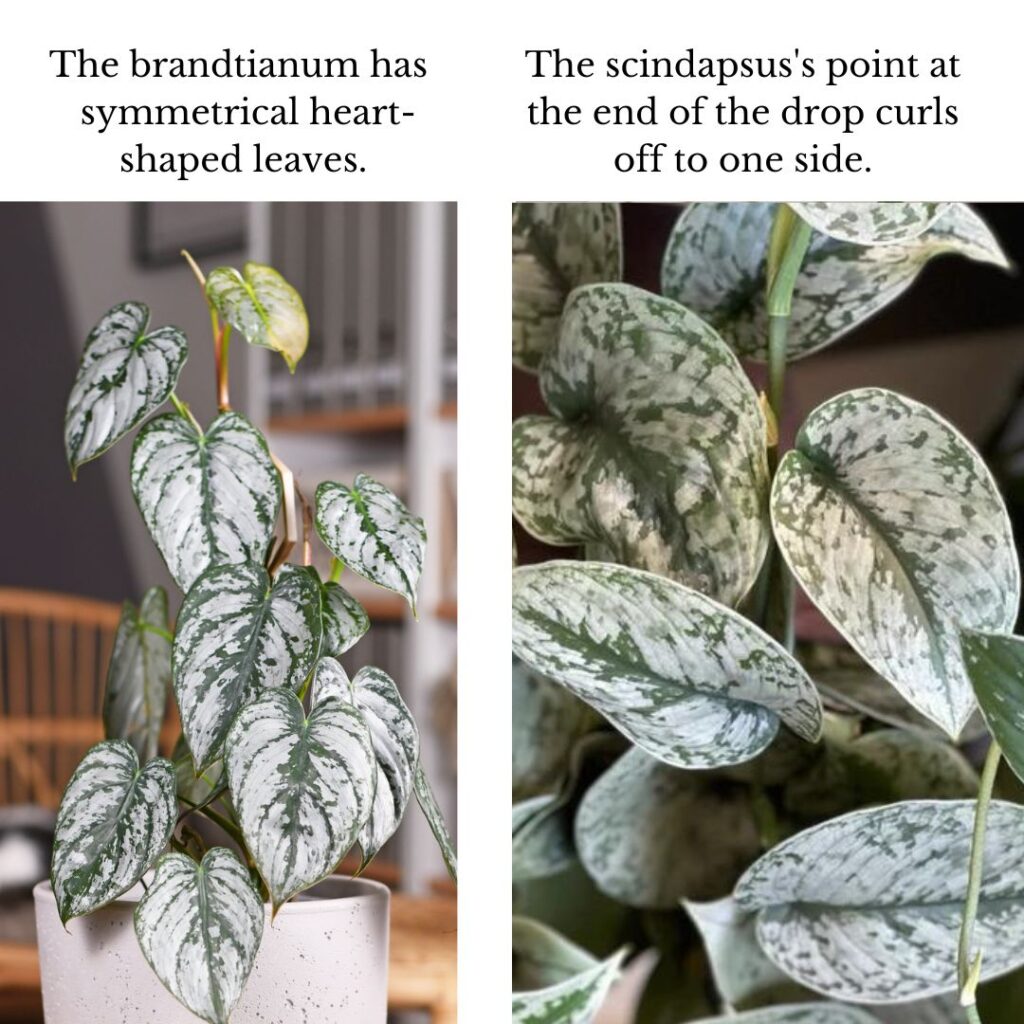
Philodendron Brandtianum Vs Sodiroi
They both look similar when young, but as they get older the sodiroi will get much bigger leaves. The sodiroi have lighter green leaf color too, the brandtianum are silver on dark green. For more on these two plants see our guide to the sodiroi.
Philodendron Brandtianum Vs Mamei
Although similar they can be told apart as the mamei has much bigger leaves when mature, and the brandtianum has a much more defined point at the end of its leaves.
Brandtianum Aff Vs Brandtianum
Any plant with ‘aff’ after it means it is not pure strain, but probably a close cultivar. ‘Aff’ mean ‘has affinity with’, so plants sold as ‘Brandtianum Aff’ are close cultivars to the brandi, one ‘aff’ could have different characteristic to another if bred from a different plant.
Philodendron Brandtianum Care FAQs and Common Problems
Root rot and leaf browning are common issues and both relate to overwatering. This plant must not sit in soggy soil.
Is Philodendron Brandtianum Rare?
The Philodendron Brandtianum is for sale in many places, so it not so rare you can’t buy it, but it can go for 40 or 50 euros / dollars due to being in high demand.
Is It Toxic To Cats?
They are mildly/moderately toxic to cats is eaten as these plants contain calcium oxalate crystals. They can cause oral irritation and/or vomiting if ingested, seek vets advice if your cat eats any.
Leggy
They can get leggy if not given enough light, move yours closer to a brighter window if this happens. You can use the leggy elongated sections for cuttings, propagate them and then plant back in with the main plant to make it bushier.
Yellow Leaves
The main cause of yellow leaves is root rot from overwatering. Be careful as philodendrons are really susceptible to this. Yellow laves can be caused by other issues too like pests, sun burn or under watering.
Additional Resources
Links:
Buy At Amazon (affiliate links):
- Humidity meter (a cheap way to monitor humidity and temperature levels)
- Grow lights.
- Humidifier (to maintain humidity levels)
- Compost / potting mix (Miracle Grow)
- Perlite (to add drainage to soil mixes)
- Moss pole
- Plant Pots
- How Not to Kill Your Houseplant (book)
Other Articles You Might Like
You might also like our other articles: Philodendron Patriciae Care, Philodendron Melanochrysum Care, Philodendron Jose Buono Care.
Please follow us on Instagram and Pinterest for regular plant updates and occasional plant giveaways.
